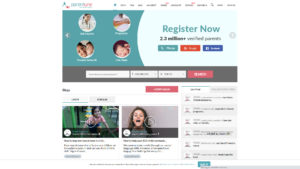In his talk at startup50, avlesh singh, co-founder, webengage, spoke about the various skills a startup must pickup, as it gears up to build scale.
MADHUMITA PRABHAKAR
Not long ago, Flipkart wanted to find out if its customers would pay a premium price to have the courier delivered in one working day, instead of two to three days. Using WebEngage’s tool, it developed a quick survey and posted it as a pop-up, to get customer feedback about the idea. The result? One in every 100 visitors responded on the survey, that is, it received a 40 per cent response rate and even implemented the service soon enough.
This, in essence is what WebEngage does. It collects customer insights in real-time, through feedback, survey and notifications, and helps online businesses design push messages, targeted at specific customer segments. Listed by Mashable as one of the top 10 product startups from India, its solution aids several of India’s leading consumer Internet startups, including Flipkart and Snapdeal.
In his talk, he delves through the various aspects a company must keep in mind, when moving from the startup to scale up phase.
Typically, customers approach us with one or two use cases in mind. And, our customer success teams ensure that they open their minds to ten other use cases they may have of the product. In fact, a large part of our scale and success is attributed to this.
Taking your employees along
Often, when your business is undergoing a scaling up phase, employees’ competencies don’t grow at the same speed. In other words, they are unable to keep pace with the growth. In such circumstances, the best strategy to adopt is to plan your scale up in a way that the employees are informed of what you intend to achieve, and align the team with your expectations.
Achieving a market fit
There is no magic formula to achieving the right market fit. As Singh puts it, “We wanted to get a lion’s share of the market. We started operations in India and for the first year and a half; we didn’t sell to customers outside the country.” And secondly, WebEngage had a clear eye on giants such as Flipkart and Snapdeal more than the smaller customers, because Singh believes startups are easier to sell to and they don’t make the best customers. “Startups mean high churn rates and low attention spans. Alternatively, if you sign a high paying client, they have more liability to make it work. This will be a better approach to validate your product,” says Singh. Success in delivering the requirements of large clients gave WebEngage the green signal in terms of serving the right market. Having achieved that, Singh believes step two now is to innovate in terms of product development as opposed to understanding the right product to build.
Balancing sales and operations
In SaaS businesses, it’s typically termed as inside sales. Similar to a KPO or BPO, we sell a product on phone. However, there’s a difference. “We bank on inbound leads and all sales are inside sales,” clarifies Singh. For WebEngage, there is no concept of outbound sales because of the ticket size of the offering, which doesn’t give the company the liberty to go out and seek customers. Instead, it takes to content marketing and other inbound marketing strategies to get customers to approach the company.
Once the lead comes in, WebEngage focuses on educating the customers about the different use cases of the product.“Typically, customers approach us with one or two use cases in mind. And, our customer success teams ensure that they open their minds to ten other use cases they may have of the product. In fact, a large part of our scale and success is attributed to this,” points out Singh. In other words, although it is difficult to balance a customer’s perception of your business and what you aim to convey, WebEngage’s customer success teams ensure that the inbound customers are steered in the right direction by being educated about the various use cases of their products. “This team is an extension of our operations team, wherein they ensure the customer is in for the long haul. Hence, they play a bigger role in our business,” he notes.
KEY TAKEWAYS
Balance sales and operations and focus on building strong customer success teams
While scaling up, keep employees informed of what you intend to achieve, and align the team with your expectations.
No magic formula for achieving the right target market. WebEngage went after the bigger clients as they helped them validate their product better than start-ups.




